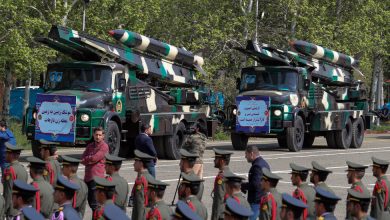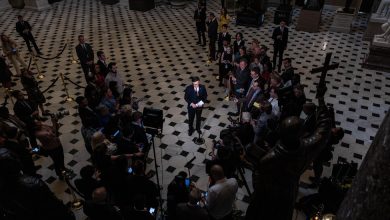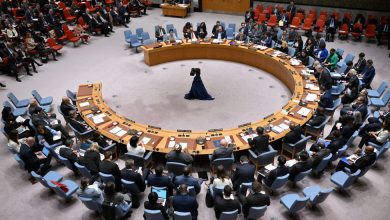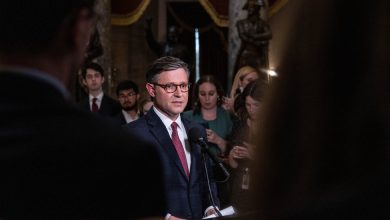Ukraine Commanders Say a Russian Invasion Would Overwhelm Them

KYIV, Ukraine — On the 30th anniversary of the founding of Ukraine’s armed forces this week, the country’s president, Volodymyr Zelensky, donned a helmet and flak jacket to tour the trenches and announced with great fanfare the delivery of new tanks, armored vehicles and ships to frontline units engaged in fighting Russian forces and Kremlin-backed separatists.
While the weapons systems may help to maintain parity in the slow-moving war of attrition that has prevailed for years, neither they nor anything else the Ukrainian military can now muster would be sufficient to repel the full-on Russian assault that Ukrainian and Western officials say Moscow appears to be preparing. With nearly 100,000 troops now massed across Ukraine’s eastern, northern and southern borders and more on the way, even the Ukrainian officials responsible for their country’s defense acknowledge that without a significant influx of resources, their forces do not stand much of a chance.
“Unfortunately, Ukraine needs to be objective at this stage,” said Gen. Kyrylo O. Budanov, the head of Ukraine’s military intelligence service. “There are not sufficient military resources for repelling a full-scale attack by Russia if it begins without the support of Western forces.”
General Budanov outlined his nightmare vision of a Russian invasion that would begin with airstrikes and rocket attacks aimed initially at ammunition depots and trench-bound troops. Very quickly, he said, the Ukrainian military would be incapacitated, its leadership unable to coordinate a defense and supply the front. After that, he said, responsibility would fall to frontline commanders to carry on the fight alone.
“They will hold up as long as there are bullets,” General Budanov said. “They’ll be able to use what they have in their hands, but believe me without delivery of reserves, there’s not an army in the world that can hold out.”
While Russia could be prepared militarily to launch an invasion of Ukraine as early as January or February, Ukraine and Western intelligence services say there is no indication that Russia’s president, Vladimir V. Putin, has made up his mind whether to do so. In a video call with President Biden on Tuesday, Mr. Putin dismissed concerns about the troop buildup on Ukraine’s border, shifting blame to the United States and NATO, which he accused of threatening Russia’s security by supporting Ukraine’s military with arms and training.
“The Russian troops are on their own territory,” an adviser to Mr. Putin, Yuri V. Ushakov, said in a briefing with reporters after the presidents had spoken. “They don’t threaten anyone.”
Still, the amassing of troops and heavy weaponry on the border has forced Ukrainian officials to face some hard truths in recent weeks. The U.S. intelligence community has assessed that Russia has devised plans for an offensive involving 175,000 troops.
Ukraine has only slightly more enlisted soldiers and officers in its entire military, according to the Ministry of Defense. It is outgunned on land, at sea and in the air, with only about 200 aircraft in its Air Force, including transport vehicles, fewer than the number of fighter planes that Russia has deployed already to the Ukrainian border.
Russia’s forces include battle-ready submarines and frigates in the Black Sea armed with cruise missiles, and land-based units equipped with Iskander-M ballistic missiles, while Ukraine lacks serious missile defense systems. The Russian missiles could wipe out a significant part of the Ukrainian military in less than an hour, said Robert Lee, a U.S. Marine Corps veteran and Ph.D. candidate at King’s College in London, who is a Russian military expert.
“If Russia really wants to unleash its conventional capabilities, they could inflict massive damage in a very short period of time,” Mr. Lee said. “They can devastate the Ukrainian military in the east really quickly, within the first 30-40 minutes.”
Ukraine’s military is not the pushover it once was. In 2014, elite Russia troops were able to seize the entire Crimean Peninsula in southern Ukraine without firing a shot. When Russian-backed separatists then took over part of eastern Ukraine’s Donbas region, Ukraine had to rely on volunteer brigades of people who took up arms, with little or no military training, to help beat back the insurgency.
But the Ukrainian military clawed its way back, fighting the separatists to a stalemate and putting a stop to the most serious hostilities. It did so with help from Western allies. The United States alone has provided $2.5 billion in military assistance that has included high-tech surveillance and communications equipment and drones. In November, the United States delivered about 88 tons of ammunition, part of a $60 million military aid package pledged by the Biden administration.
On Wednesday, President Biden ruled out deploying U.S. forces to Ukraine to deter Russia. But there are more than 150 U.S. military advisers in Ukraine, a combination of U.S. Special Forces and National Guard, currently the Florida National Guard’s 53rd Infantry Brigade Combat Team, according to two U.S. Defense Department officials, who spoke on condition of anonymity to discuss sensitive troop deployments. About a dozen other NATO countries also have military advisers in Ukraine now, the officials said.
Under the Trump administration, the Ukrainians, for the first time, were given anti-tank Javelin missiles. Ukrainian forces have so far refrained from firing Javelins on the battlefield, partly from a desire to avoid antagonizing the Kremlin.
The Biden administration has continued to supply them, delivering a new cache of missiles in October. John F. Kirby, a Pentagon spokesman, said Wednesday that there were no conditions or restrictions placed on the Javelins, except that the Ukrainian forces use them “responsibly” and “in self-defense.”
In an interview with Radio Liberty this month, Gen. Oleksandr Pavlyuk, the commander of the Joint Operation Forces fighting the separatists, said the Javelins had already been deployed to military units in eastern Ukraine. A senior Ukrainian military official, speaking on condition of anonymity to discuss sensitive military issues, confirmed that Javelin missiles had been deployed to frontline military units a month ago, but had not yet been fired in battle.
“The Javelins are there, and if our enemies employ tanks they will be used,” the official said.
The Biden administration has remained vague about how else it might come to Ukraine’s defense in case of invasion.
Understand the Escalating Tensions Over Ukraine
A brewing conflict. Antagonism between Ukraine and Russia has been simmering since 2014, when the Russian military crossed into Ukrainian territory, annexing Crimea and whipping up a rebellion in the east. A tenuous cease-fire was reached in 2015, but peace has been elusive.
A spike in hostilities. Russia has recently been building up forces near its border with Ukraine, and the Kremlin’s rhetoric toward its neighbor has hardened. Concern grew in late October, when Ukraine used an armed drone to attack a howitzer operated by Russian-backed separatists.
Ominous warnings. Russia called the strike a destabilizing act that violated the cease-fire agreement, raising fears of a new intervention in Ukraine that could draw the United States and Europe into a new phase of the conflict.
The Kremlin’s position. President Vladimir V. Putin of Russia, who has increasingly portrayed NATO’s eastward expansion as an existential threat to his country, said that Moscow’s military buildup was a response to Ukraine’s deepening partnership with the alliance.
A measured approach. President Biden has said he is seeking a stable relationship with Russia. So far, his administration is focusing on maintaining a dialogue with Moscow, while seeking to develop deterrence measures in concert with European countries.
In his video call with Mr. Putin on Tuesday, President Biden looked his counterpart in the eye and warned the United States would go beyond the economic punishments imposed on Russia after the 2014 seizure of Crimea should Mr. Putin decide to order military action, according to an account by Jake Sullivan, the president’s national security adviser. What those penalties might be were left unclear, though few expect the United States to commit significant military assistance beyond what has already been provided.
The lack of firm commitments from Ukraine’s Western backers are a source of consternation for Ukrainian officials.
“They need to decide, either we’re allies as they declare — and in that case allies help one another — or they need to say that this is not exactly the case,” said General Budanov, the military intelligence chief. “If the civilized world wants to avoid catastrophe — and this will be a catastrophe for everyone — we need military technical support now, not tomorrow, not the day after tomorrow, not in year. Now.”
Those who understand that such a level of support is unlikely have begun to speak darkly of popular armed resistance against any Russian occupation. In an interview, General Pavlyuk noted that Ukraine had up to half a million people with military experience. If the West does not come to Ukraine’s aid, he said, “we’ll start a partisan war.”
“Eight years have passed and there are very many people with military experience who are prepared with weapons in their hands to fight,” he said.
One senior Ukrainian military official who spoke on condition of anonymity said that if all else failed, the military would simply open its weapons depots and allow the Ukrainian people to take whatever they need to defend themselves and their families.
Eric Schmitt contributed reporting from Washington.




